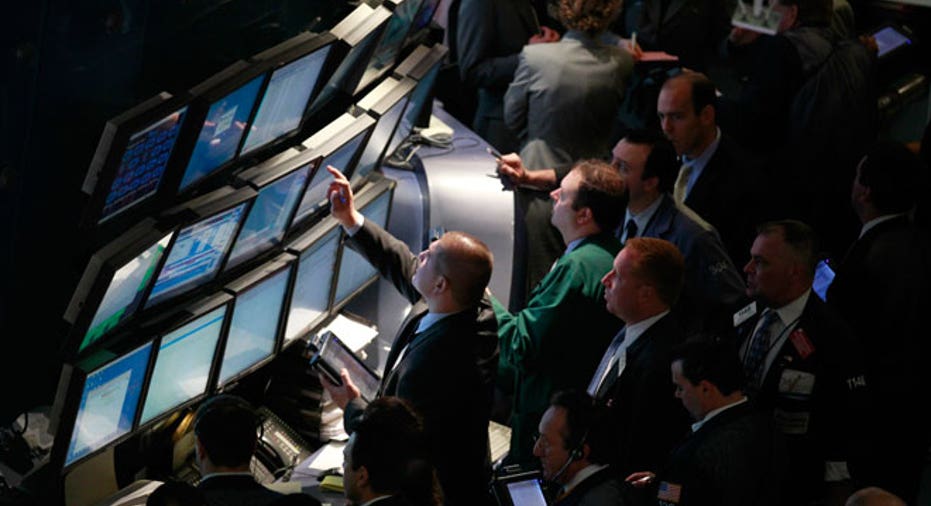If Dow Sets New Highs But No One Cares, Does It Still Count?

Hovering at just below 14000, the Dow Industrials are less than 300 points away from setting all-time highs, but unlike prior milestones don’t expect any fireworks to commemorate the feat.
That’s because despite its resiliency, duration and incredible distance, this has been one of the least celebrated bull markets of all time.
The apathy for the great run that began in 2009 finds its roots in skepticism about easy-money policies from the Federal Reserve, disappointment with continued sluggishness in the real economy and psychological damage inflicted on investors who lived through the Great Recession.
“I don’t think they trust it," said Sam Stovall, chief investment strategist at McGraw-Hill’s (NYSE:MHP) S&P Capital IQ. "Most people are still licking their wounds from the 2008 bear market and are basically saying: ‘Gosh, why would I want to get sucked back into something like that?’”
The overarching indifference to the upcoming milestones and the overall run prompted veteran market strategist Ed Yardeni to dub it the “Rodney Dangerfield of bull markets,” alluding to the late comedian’s famous one-liner: “I don’t get no respect!”
Cynicism in Lieu of Euphoria
Respected or not, the Dow Jones Industrial Average has skyrocketed an incredible 7,300 points since tumbling to 12-year lows during the darkest days of March 2009, when some investors legitimately feared the U.S. was on the verge of a second depression.
Fueled by the end of the crisis, return to economic growth (albeit very slow growth) and incredibly aggressive and unprecedented efforts by the Fed, the Dow has surged about 112% to end last week just 269 points away from its all-time record close of 14164.53 set in October 2007.
Despite this feat, there is remarkably little enthusiasm for the move, especially compared with prior milestones.
“I’ll never forget the day the Dow closed above 10000 for the first time. I still have the cap,” said Peter Kenny, managing director at Knight Capital Group (NYSE:KCG) who was on the floor of the New York Stock Exchange for the landmark. “That was met with a level of enthusiasm and public awareness almost like man landing on the moon.”
But when and if the Dow sets new records in the coming days or weeks, few expect celebrations.
“It’s not on the broader public’s radar screen,” said Kenny. “The overriding sense will be: Great, but my finances are still lousy, I’m still suffering from the downturn of 2008, my house is still worth less, I’m paying more in taxes…There will be a degree of cynicism.”
Relatively Fast Rebound
Even though the economy remains lackluster -- the unemployment rate is just a hair below 8% and the U.S. economy is growing at just 2% -- the stock market has returned to bear market levels faster than some had figured.
If the S&P 500 breaks through its record high of 1565.15 in the coming weeks, it would have recovered all lost ground in 47 months. According to Stovall, that is about average for a recovery after all bear markets but well ahead of the median of 62 months it has taken the broad index to bounce back following all prior meltdowns of 40% or greater since 1929.
By comparison, it took the S&P 500 an incredible 25 years to recover from the Crash of ’29 that set off the Great Depression.
Stovall said the Fed, which lowered rates to near zero and allowed its balance sheet to swell past $3 trillion, deserves credit for the faster recovery in the equity markets.
“Bernanke is a student of the 1930s and knows that back then we raised rates too quickly and increased reserve requirements too soon, which drew us back into another 40%-plus bear market,” said Stovall.
Kenny agreed, adding: “The old adage 'you can’t fight the Fed' has never put been truer.”
Missing Out on the Party
Retail investors have been scared away by a slew of political, financial and economic setbacks, including the mysterious flash crash of May 2010, the debt-ceiling debacle and Europe’s sovereign debt crisis.
Since the bull market began in the spring of 2009, the S&P 500 has undergone a number of significant retreats, including a 16% tumble in 2010, a 19.5% dive in 2011 and at least three declines of 5% to 10%, Stovall said.
“People are saying, 'Every time I feel comfortable enough to go back in the water, I find there is a shark that bites my leg,'” he said.
Investors’ apathy for the bull market means that a great number of them likely missed out on the returns generated by the historic run.
While the Dow has more than doubled, some individual stocks have enjoyed even more incredible runs. Since March 2009 American Express (NYSE:AXP) and Apple (NASDAQ:AAPL) are up 476% and 427%, respectively, while Bank of America (NYSE:BAC) has soared 265%.
The markets setting new records “will garner everyone’s attention and people will wonder what they weren’t looking at over the past one-and-a-half to two years,” said Kenny. “People will say: 'I can’t miss this move higher.’ Well, they have.”
Can the 'Dangerfield Rally' Endure?
Even Wall Street professionals remain conflicted over the legitimacy and future of the current bull market.
“There’s definitely a divide. Wall Street has a very, very clear divide between bulls and bears -- more so now than I can remember,” said Kenny.
Put Yardeni, president of investment advisory Yardeni Research, firmly in the bull camp, where he’s been throughout the current run.
“Stocks remain relatively cheap,” Yardeni wrote in a note to clients last week. “Since the start of the bull market, valuations have been held down by fears of a double dip in the U.S., a hard landing in China, and a meltdown in Europe. If these concerns diminish this year, as I expect, there is room for higher multiples.”